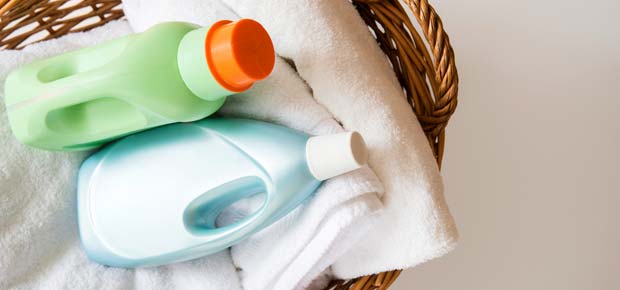softeners are laundry cleaning products that are designed and manufactured to deliver a variety of attributes in the fabric, such as superior softness, reduced wrinkle formation during the wash cycle, improved iron glide, better wrinkle removal after wash, superior color retention and improved stain protection. In addition, the fabric softeners are designed with technique and formulas that are safe, environmentally friendly and cost effective. Manufacturers now days, use technical evaluations along with consumer testing to formulate softeners that are effective as well as affordable. Depending on the type and brand of fabric softener one uses, it can be added and mixed at the starting of laundry cycle during the rinse cycle or at the same time detergent is dispensed.
There is wide assortment of fabric softener products available in the industry today, which come in a variety of sizes, formulations and price ranges. These softeners may also come in sheets to be placed in the dryer. People use different brands and products depending on their choice and specific requirements, however one brand may not be necessarily better than the other.
Types
Fabric softeners come in two types, viz. Liquid as well Sheet form -

While both types of fabric softeners deliver a thorough job of softening and freshening, superior quality fabric softeners also help in gently protecting the fabrics from rinse water impurities, which cause fading.
How They Function
The most common active ingredients of fabric softeners are based on
long-chain molecules that are positively charged in nature. These molecules
generally contain at least one hydrophobic (water-resisting) group and a
nitrogen atom (positively charged) that is attracted towards the negatively
charged fabric surface. The result is a slack ionic bonding and absorption
of softener compounds onto the surface of cloth or fabric. In other words,
fabric softeners - whether dispensed in the washer or dryer are absorbed in
the washer to deliver a variety of benefits.
Fabric Softeners are manufactured by adding first emulsifiers and then conditioning ingredients into water. The batch is heated and mixed and in the end a variety of other ingredients are added as per the requirement and choice.
Advantages
Fabric softener is a product, which is used during the laundering to eliminate
static cling and make clothes soft and its benefits are many. For example, a
fabric softener can be used to reduce static cling, as a result of its
action, the socks do not stick to sweaters when they are taken out of the
dryer. A fabric softener also helps in eliminating and reducing wrinkles in
clothes. Some materials may require ironing, but by adding a small amount of
fabric softener to your laundry, you can reduce the wrinkles by a great
amount.
Fabric softeners also make the feel of clothes better too, which is very apparent on laundry products like sheets and towels, and especially those that are hung outside. When a fabric softener is not used, these products tend to feel stiffer. By adding a little of fabric softener you can make a nice soft set of sheets or a fluffy towel. In short, we can say that fabric softener offer following advantages -
People with sensitive skin or those having allergy problems may have difficulty using a fabric softener. The allergic reaction may occur due to the ingredients that are used to give a fresh scent to the fabric. If this is the case, a non-scented fabric softener can also be used. Organic fabric softeners are also available in the market. If in the case, a fabric softener cannot be used, vinegar can be added to the rinse cycle to eliminate some of the static and to make clothes softer.
Tips for Effective Use
While using fabric softeners, you should carefully follow the manufacturer
instructions given on the package for effective usage and maximum benefits.
Here are some general guidelines -

If you have decided to make soap at home, you will need soap making supplies in the form of raw materials, soap making equipment & tools ...
Read More
Someone has rightly said that clothes are not just clothes. They form an integral part of a person's personality and tell a lot about their nature and...
Read MoreCleansing products play an important role in the daily lives of people.
Both soaps and detergents are cleansing products that we frequently use in our
Soap is designed as a product to be used once and then flushed down the drain...